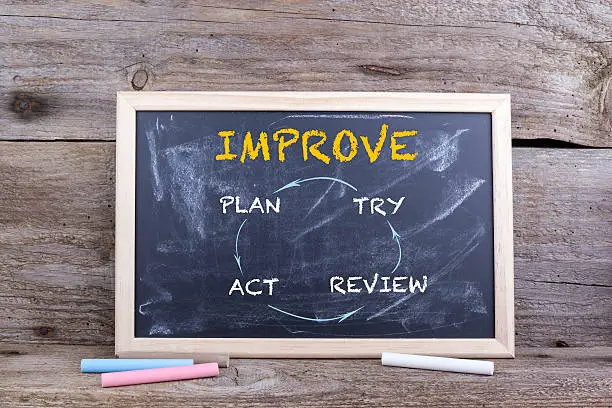Investing in Human Capital, A Precision Approach to Personal and Professional Growth

In an era defined by rapid technological advancements and ever-evolving industries, the concept of human capital has gained prominence as a key driver of success and innovation. Investing in human capital entails cultivating the skills, knowledge, and talents of individuals to enhance their productivity, creativity, and adaptability in the workforce. However, navigating the complexities of human capital investment requires a precision approach that recognizes the unique strengths, needs, and aspirations of each individual. In this article, we explore the principles of precision investing in human capital and provide actionable strategies for personal and professional growth.


Page Contents
- 1 Investing in Human Capital, A Precision Approach to Personal and Professional Growth
- 2 5 Key Principles of Precision Investing in Human Capital:
- 3 5 Actionable Strategies for Precision Human Capital Investment:
- 4 Let’s consider an example of how an individual, Sarah, applies precision investing principles to her personal and professional growth.
- 5 We’ll use a table format to illustrate each step of the process:
- 6 Conclusion:
Investing in Human Capital, A Precision Approach to Personal and Professional Growth
A> Understanding Human Capital Investment:
Human capital refers to the collective skills, knowledge, experience, and attributes possessed by individuals that contribute to their economic value and potential for success. Investing in human capital involves allocating resources – such as time, effort, and money – to develop and enhance these capabilities. From formal education and professional training to continuous learning and skill development, human capital investment encompasses a broad range of activities aimed at maximizing individual potential and fostering long-term success.
B> The Precision Approach to Human Capital Investment:
A precision approach to human capital investment recognizes that one size does not fit all when it comes to personal and professional development. Instead, it emphasizes the importance of tailored strategies and interventions that take into account the unique strengths, interests, and goals of each individual. By leveraging data, technology, and personalized coaching, organizations and individuals can optimize their investments in human capital to achieve maximum impact and value.


5 Key Principles of Precision Investing in Human Capital:
- Assessment and Analysis: The first step in precision investing in human capital is to conduct a thorough assessment of individual strengths, weaknesses, and areas for growth. This may involve skills assessments, personality assessments, and performance evaluations to gain insights into each individual’s unique profile.
- Goal Setting and Planning: Based on the assessment results, individuals can work with coaches or mentors to set clear, achievable goals for personal and professional development. These goals should be specific, measurable, attainable, relevant, and time-bound (SMART), providing a roadmap for focused growth and progress.
- Customized Learning and Development: Once goals are established, individuals can tailor their learning and development activities to align with their objectives. This may involve pursuing formal education, attending workshops and training programs, seeking mentorship and coaching, or engaging in self-directed learning activities.
- Feedback and Iteration: Continuous feedback and iteration are essential components of precision investing in human capital. Individuals should regularly solicit feedback from peers, mentors, and supervisors to identify areas for improvement and refine their development plans accordingly. By embracing a growth mindset and being open to feedback, individuals can accelerate their learning and growth trajectory.
- Measurement and Evaluation: To assess the effectiveness of human capital investments, individuals should track their progress against established goals and objectives. This may involve monitoring key performance indicators, collecting feedback from stakeholders, and evaluating the impact of learning and development activities on job performance and satisfaction.
5 Actionable Strategies for Precision Human Capital Investment:
- Invest in Lifelong Learning: Embrace a mindset of continuous learning and seek out opportunities to acquire new skills, knowledge, and experiences throughout your career.
- Develop Self-Awareness: Take the time to reflect on your strengths, weaknesses, and values, and use this self-awareness to inform your personal and professional development goals.
- Build a Support Network: Surround yourself with mentors, coaches, and peers who can provide guidance, support, and accountability as you pursue your goals.
- Set Clear Goals: Define specific, achievable goals for your personal and professional growth, and develop a plan to reach them with precision and intention.
- Embrace Feedback: Be open to constructive feedback and use it as an opportunity for growth and improvement. Seek out diverse perspectives and perspectives that challenge your assumptions and help you see things from different angles.
Let’s consider an example of how an individual, Sarah, applies precision investing principles to her personal and professional growth.
We’ll use a table format to illustrate each step of the process:
| Precision Investing in Human Capital: Sarah’s Journey |
|---|
| Step | Description |
|---|---|
| Assessment and Analysis | Sarah conducts a self-assessment to identify her strengths, weaknesses, and areas for growth. |
| – Strengths: Strong communication skills, analytical mindset, and leadership potential. | |
| – Weaknesses: Limited experience in project management and public speaking. | |
| Goal Setting and Planning | Sarah sets SMART goals to address her development needs and advance her career. |
| – Goal 1: Complete a project management certification course within six months. | |
| – Goal 2: Participate in a public speaking workshop and deliver a presentation at work. | |
| Customized Learning and Development | Sarah tailors her learning experiences to align with her goals and preferences. |
| – Enrolls in an online project management course with flexible study options. | |
| – Joins a Toastmasters club to improve her public speaking skills through regular practice. | |
| Feedback and Iteration | Sarah seeks feedback from colleagues, mentors, and Toastmasters peers to refine her skills. |
| – Receives constructive feedback on project management assignments and adjusts her approach accordingly. | |
| – Incorporates feedback from Toastmasters evaluations to enhance her public speaking delivery. | |
| Measurement and Evaluation | Sarah tracks her progress towards her goals and assesses the impact of her learning activities. |
| – Monitors completion of project management course modules and evaluates acquired knowledge. | |
| – Measures improvement in public speaking confidence and effectiveness through self-assessment and peer feedback. |
By applying precision investing principles to her personal and professional development, Sarah maximizes her potential and accelerates her career growth. Through self-assessment, goal setting, customized learning, feedback, and measurement, she takes intentional steps to address her development needs and achieve her aspirations. As a result, Sarah becomes a more effective and confident professional, equipped with the skills and knowledge to thrive in her chosen field.
Conclusion:
Investing in human capital is essential for personal and professional success in today’s dynamic and competitive landscape. By adopting a precision approach to human capital investment, individuals can maximize their potential, enhance their value, and achieve their goals with precision and intention. By assessing individual strengths, setting clear goals, customizing learning and development activities, seeking feedback, and measuring progress, individuals and organizational structure can optimize their investments in human capital and position themselves for long-term success and fulfillment.






